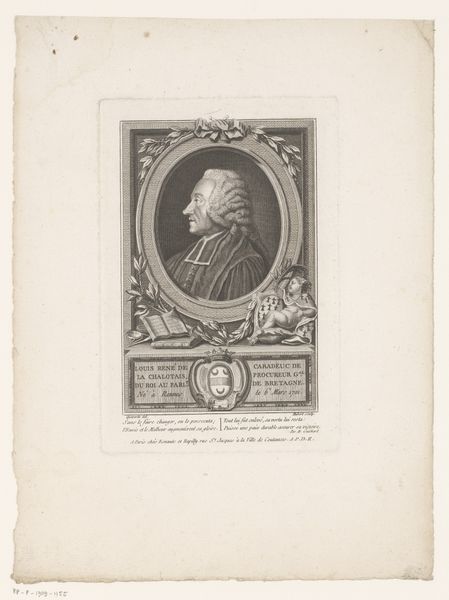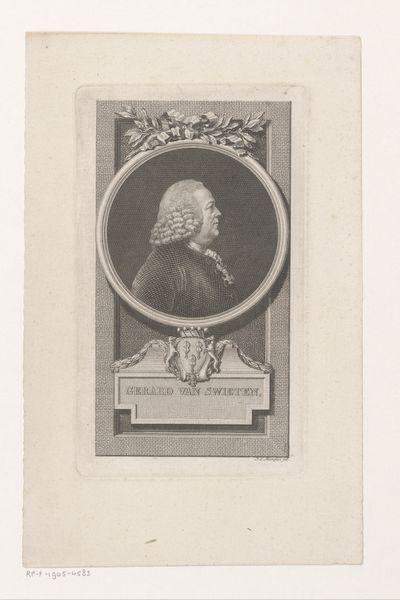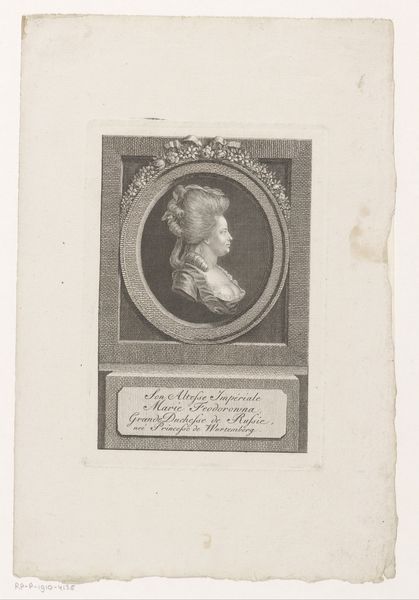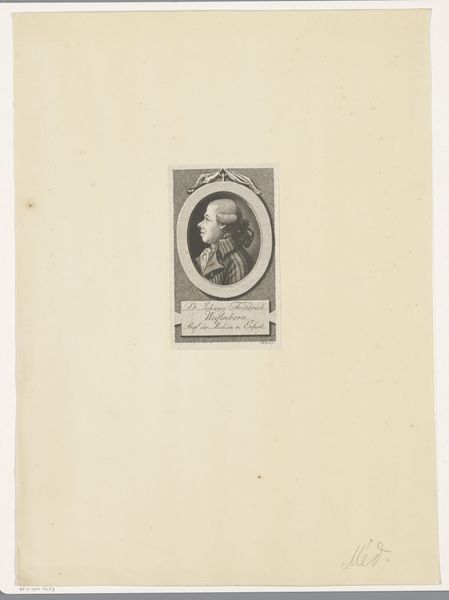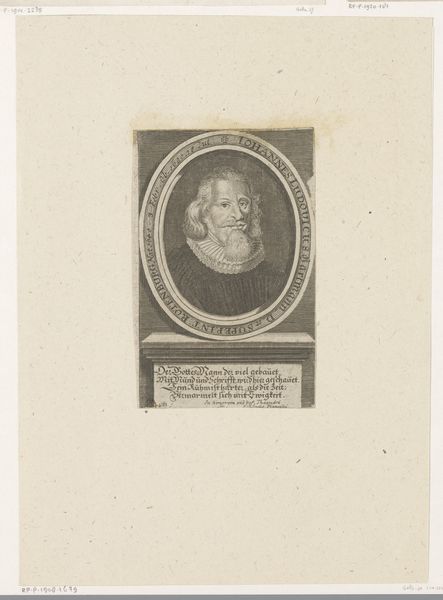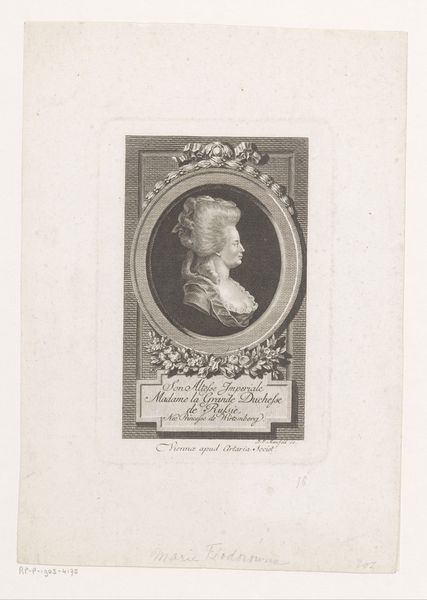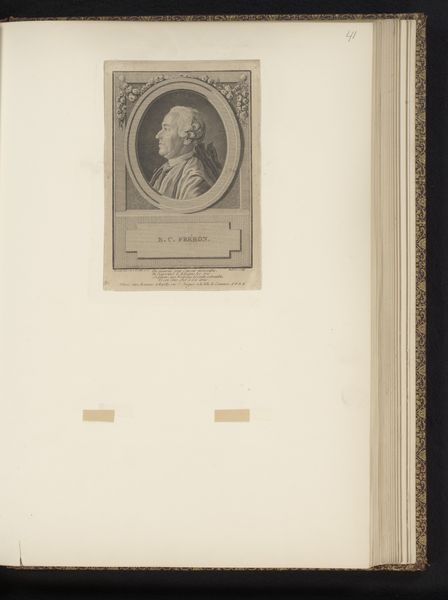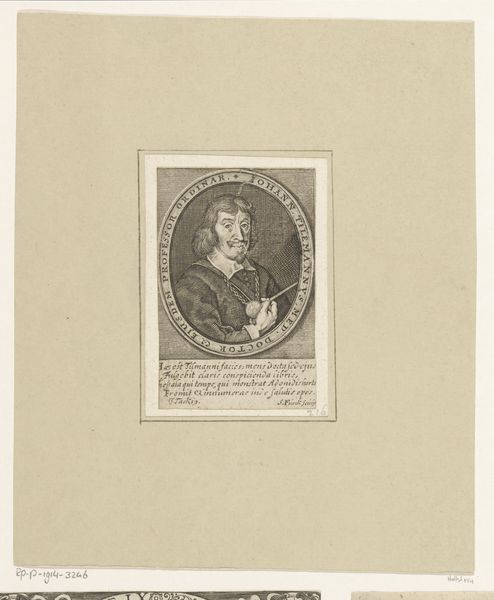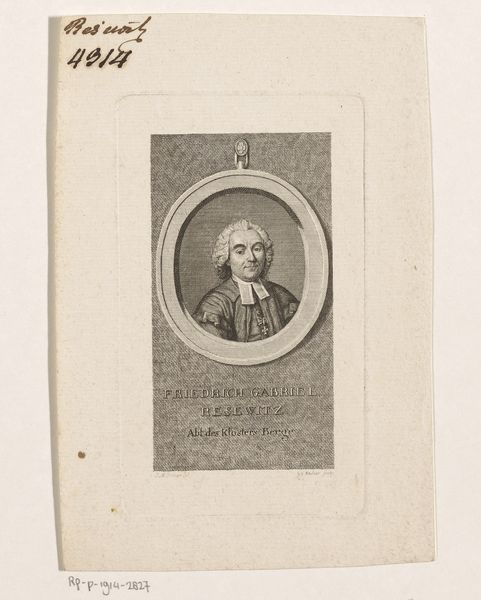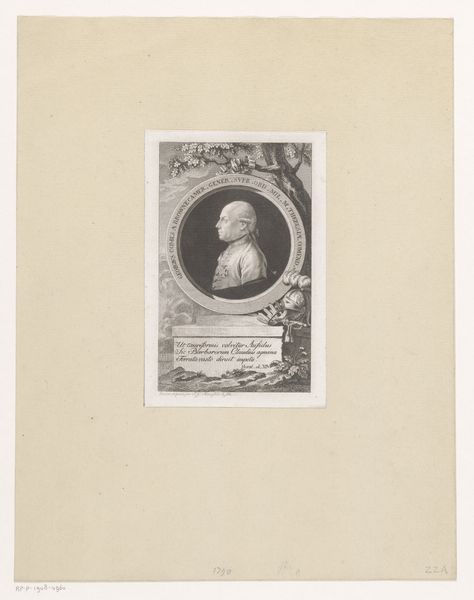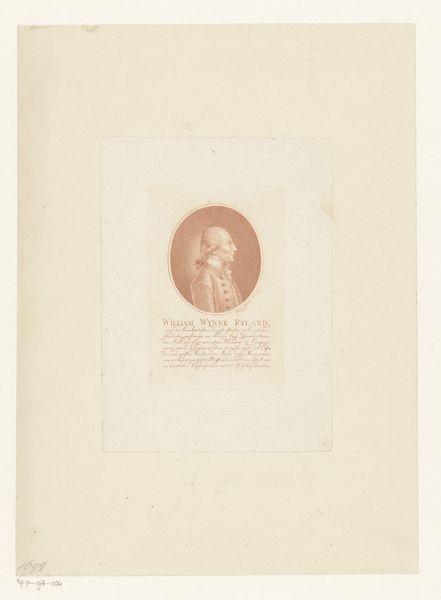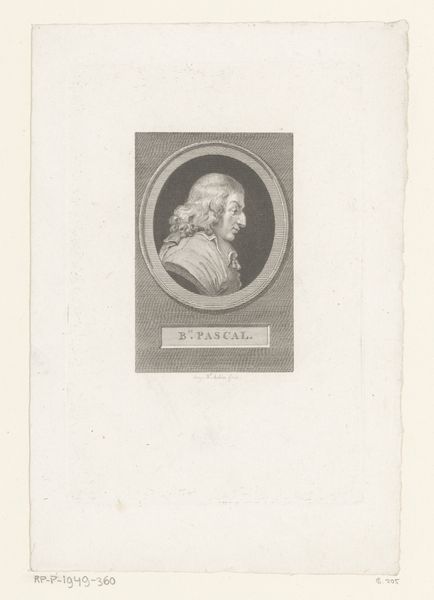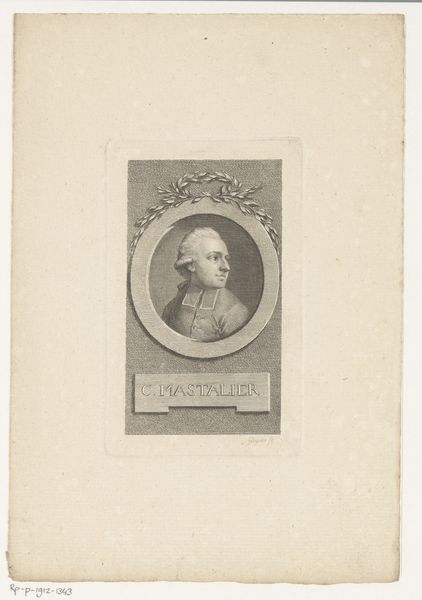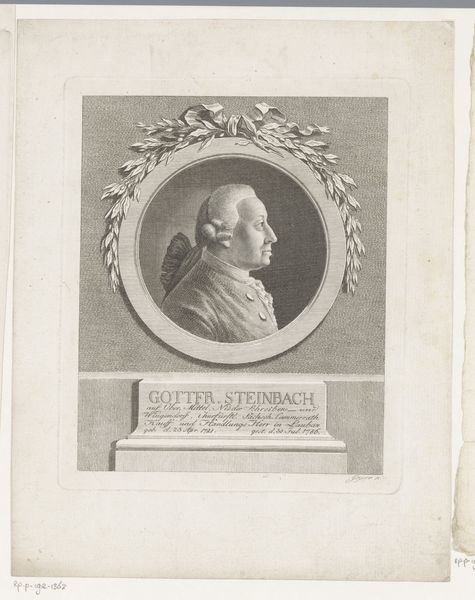
print, engraving
#
portrait
#
baroque
# print
#
engraving
Dimensions: height 134 mm, width 75 mm
Copyright: Rijks Museum: Open Domain
Curator: Welcome. We are looking at the “Portrait of August Buchner,” created around 1689 by Johann Christoph Boecklin. It’s an engraving, part of the Rijksmuseum’s collection. Editor: My first thought? Austerity. Everything from the palette to his solemn expression gives off a very serious, scholarly vibe. Curator: Absolutely. Consider the social context: portrait engravings like these served an important public function. They weren't just about capturing likeness, but also about establishing and reinforcing social hierarchies. Buchner, as a professor, is presented with a certain degree of gravitas, visually cementing his position within the academic community. Editor: The inscription below reinforces that: August Buchner, Professor of Eloquence at the Academy of Wittenberg, a clear visual declaration of status. It raises questions about who this image was meant to impress and what power dynamics it reflects. Was this displayed in the university, reminding students of the academic pecking order? Curator: Precisely. These images often circulated within academic circles and amongst the elite, acting almost as visual resumes, showcasing their intellectual achievements. Boecklin, the artist, caters to the conventions of the time, portraying his subject with decorum. Notice his attire – it’s formal and unadorned, signaling a rejection of ostentation. Editor: Though, the chain and pendant indicate his stature – even with its simplicity. It speaks to the constraints within which an artist worked then: to depict the sitter honestly while adhering to sartorial codes indicating prestige. Did this control creativity or focus it? What impact did that have on Baroque printmaking overall? Curator: The standardization of these prints, while perhaps limiting in some ways, did provide accessibility. Engravings allowed wider circulation of imagery than paintings ever could, spreading influence to far reaches of society. This, in turn, helped form shared notions of authority and societal expectation. Editor: It is remarkable to consider how images, even those seemingly straightforward as portraits, played a role in shaping how we perceived and engaged with power. This speaks volumes about the politics embedded in artistic choices. Curator: Indeed. This portrait of August Buchner offers us a window into the world of academia and the role that art played in constructing and solidifying social structures. Editor: Exactly. Thinking about art in its social context offers an invaluable means to investigate how images communicate—and ultimately reinforce or subvert—dominant societal narratives.
Comments
No comments
Be the first to comment and join the conversation on the ultimate creative platform.
